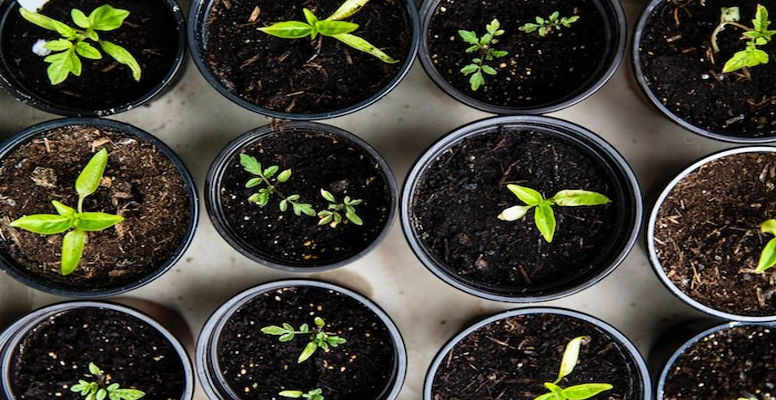Welcome to our comprehensive guide on plant nutrition, where we delve into the fascinating world of micro and macro nutrients. Understanding the role of these essential elements is key to promoting healthy plant growth and maximizing yields in your garden or farm. Let’s explore the fundamentals of plant nutrition and how you can optimize nutrient management for thriving plants.
The Basics of Plant Nutrients
Just as humans intake good and nutritious foods to keep themselves healthy and strong, plants need nutritious foods as well, we call them fertilizers.
As you may know, the soil contains all the nutrients the plants need, and more than that plants are autotrophs, which means they prepare their own food materials through the process called photosynthesis which is needed for their growth and development.
So, do they need extra food?
The answer is yes, they need. Let’s know why in depth.
Plants require a diverse array of nutrients to support their growth and development. These nutrients can be broadly categorized into two groups: macro nutrients and micro nutrients.
- Macro Nutrients: Required in comparatively larger amounts
- Nitrogen (N): Essential for vegetative growth, leaf development, and overall plant vigor.
- Phosphorus (P): Vital for root development, flowering, and fruit set.
- Potassium (K): Promotes disease resistance, water regulation, and fruit quality.
- Calcium (Ca): Supports cell wall structure and root development.
- Magnesium (Mg): A component of chlorophyll essential for photosynthesis.
- Sulfur (S): Necessary for protein synthesis and enzyme function.
- Micro Nutrients: Required in smaller quantity
- Iron (Fe): Involved in chlorophyll synthesis and enzyme activation.
- Manganese (Mn): Facilitates photosynthesis and enzyme reactions.
- Zinc (Zn): Essential for hormone regulation and carbohydrate metabolism.
- Copper (Cu): Required for enzyme activation and nutrient uptake.
- Boron (B): Aids in cell division, pollen formation, and fruit development.
- Molybdenum (Mo): Necessary for nitrogen fixation and enzyme activity.
- Chlorine (Cl): Plays a role in photosynthesis and osmotic regulation.
- Nickel (Ni): Required for nitrogen metabolism and enzyme function.
Sourcing Plant Nutrients
- Soil: The soil serves as the primary reservoir of nutrients for plants, with soil composition influencing nutrient availability and uptake.
- Organic Matter: While the soil contains nutrients, they may not always be in a water-soluble form accessible to plants. When compost is added to the soil, it begins to breaks down complex organic compounds into simpler forms, releasing nutrients that were previously bound in organic matter into water soluble form which can be absorbed by plants. As microbes multiply and break down organic materials, they gradually release nutrients, making them available for plant uptake over time. This slow-release mechanism ensures a steady supply of nutrients to plants, promoting healthy growth and vitality.
- Fertilizers: Fertilizers provide supplemental nutrients to replenish soil fertility and support plant growth. By adding fertilizers, gardeners and farmers can ensure that plants receive a balanced diet of essential elements needed for healthy growth, especially during periods of high demand or nutrient deficiencies. The application of fertilizer containing both macro and micro nutrient enables immediate release of nutrients to plants. Fertilizers are mixed with water and sprayed to plants or can also be provided through irrigation.
- Water: Proper irrigation ensures efficient nutrient uptake by plant roots, transporting essential elements from the soil to the plant.
Detecting Nutrient Deficiencies and Excesses
- Symptoms of Deficiencies: Yellowing leaves, stunted growth, and poor fruit development are common signs of nutrient deficiencies in plants.
- Diagnosing Excesses: Nutrient toxicities can manifest as leaf burn, wilting, or abnormal growth patterns, indicating an imbalance in nutrient levels.
- Soil Testing: Conducting soil tests helps identify nutrient imbalances and guide targeted fertilizer applications to address deficiencies or excesses.
Strategies for Nutrient Management
- Balanced Fertilization: Select fertilizers or amendments that provide a balanced ratio of macro and micro nutrients to meet plant requirements.
- Timing of Applications: Apply fertilizers at the appropriate growth stages to support plant needs and minimize nutrient losses through leaching or runoff.
- Soil Amendments: Incorporate organic compost into soil to improve nutrient retention, enhance soil structure, and promote microbial activity.
In conclusion, understanding the role of micro and macro nutrients is essential for promoting healthy plant growth and maximizing yields in your garden or farm. By optimizing nutrient management practices and addressing nutrient deficiencies or excesses, you can cultivate thriving plants and achieve bountiful harvests. Remember to prioritize soil health, proper fertilization, and regular monitoring to ensure optimal nutrient uptake and plant vitality.
Ready to enhance your plant nutrition knowledge and optimize nutrient management in your garden or farm? Explore our resources on soil health, fertilization techniques, and sustainable gardening practices to unlock the full potential of your plants. Visit our websites – https://www.earthfirstsolutions.in/ and https://arkaspr.com/ Together, let’s cultivate healthy, vibrant gardens and farms fueled by the power of micro and macro nutrients!

